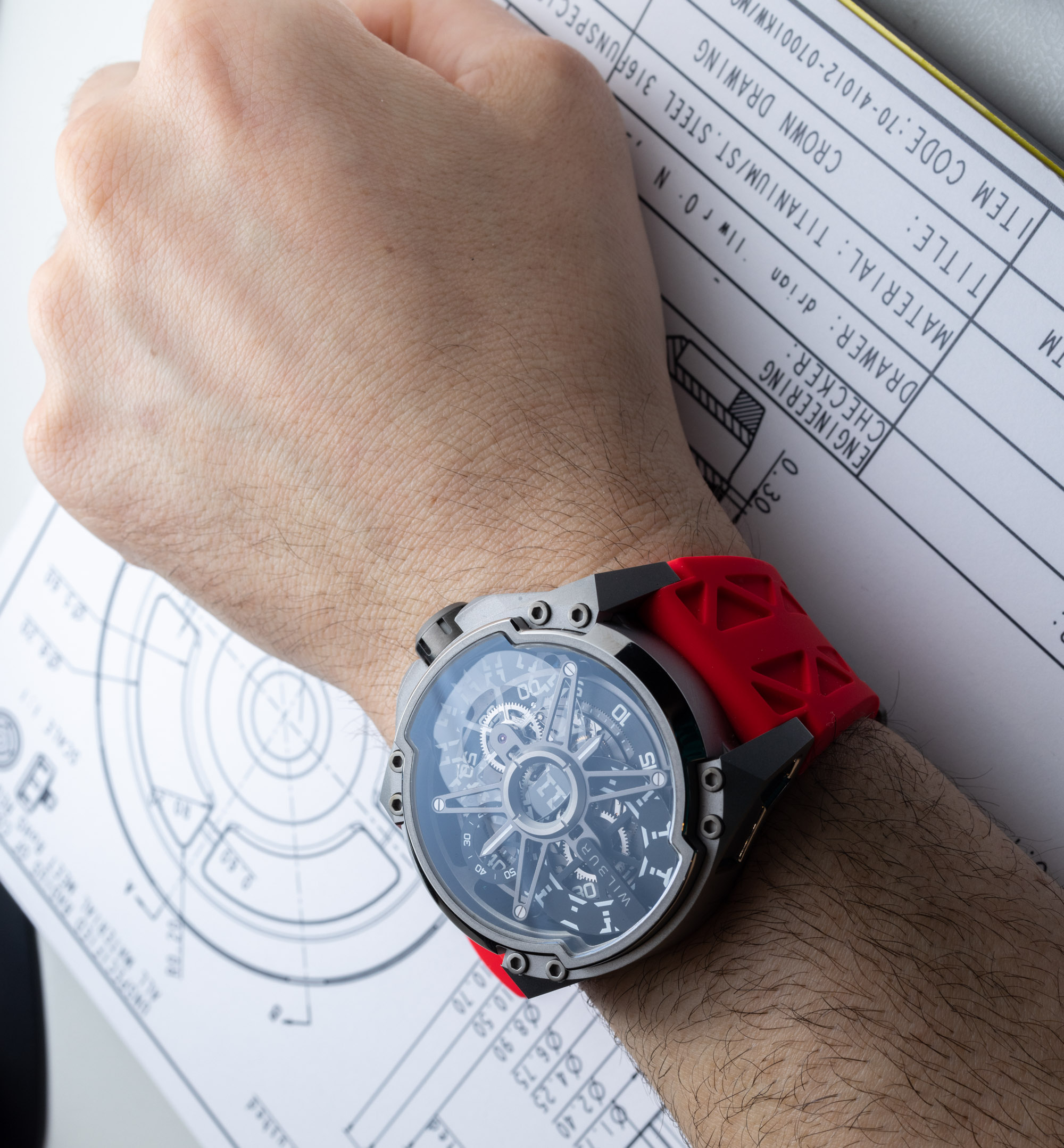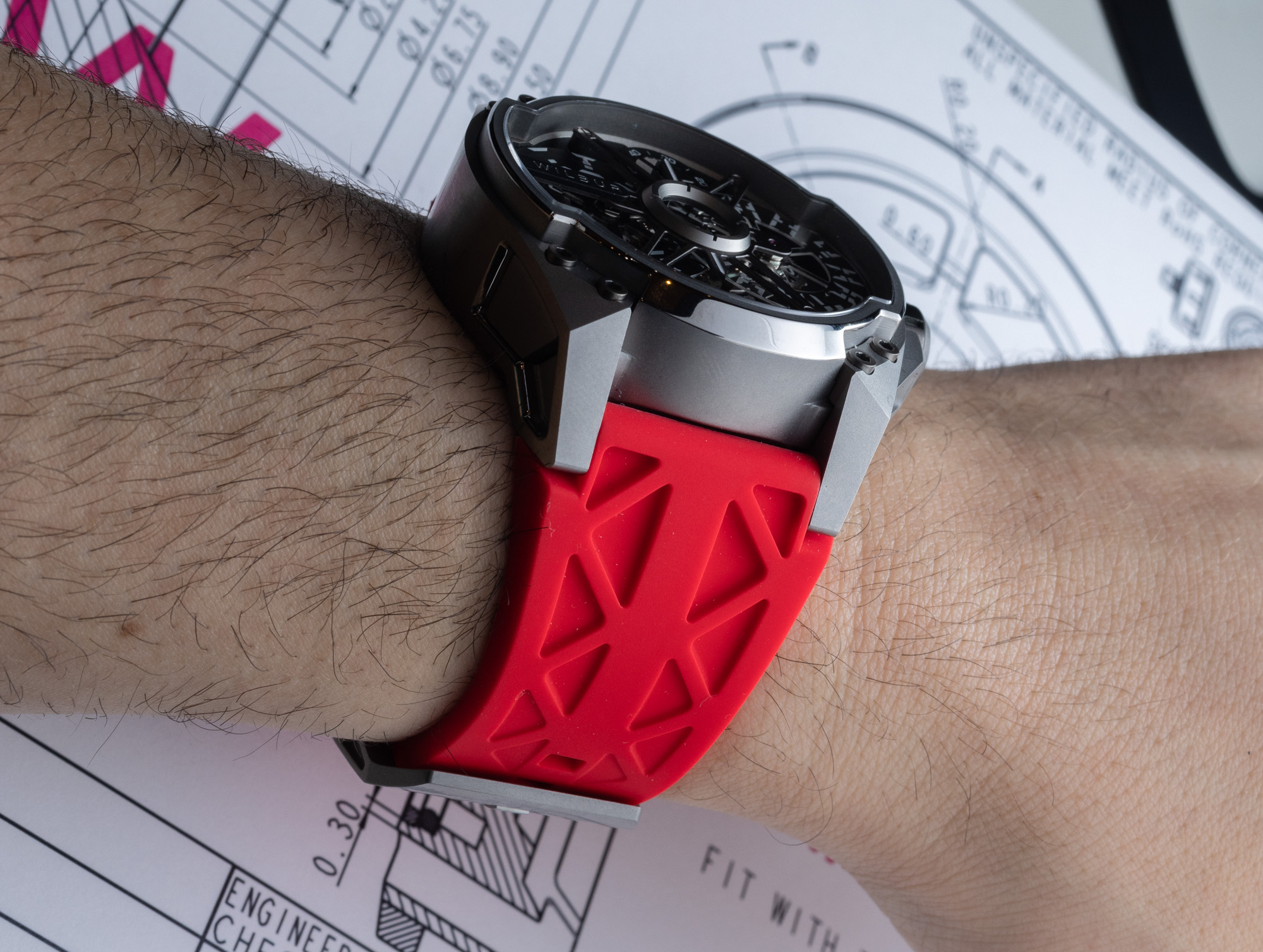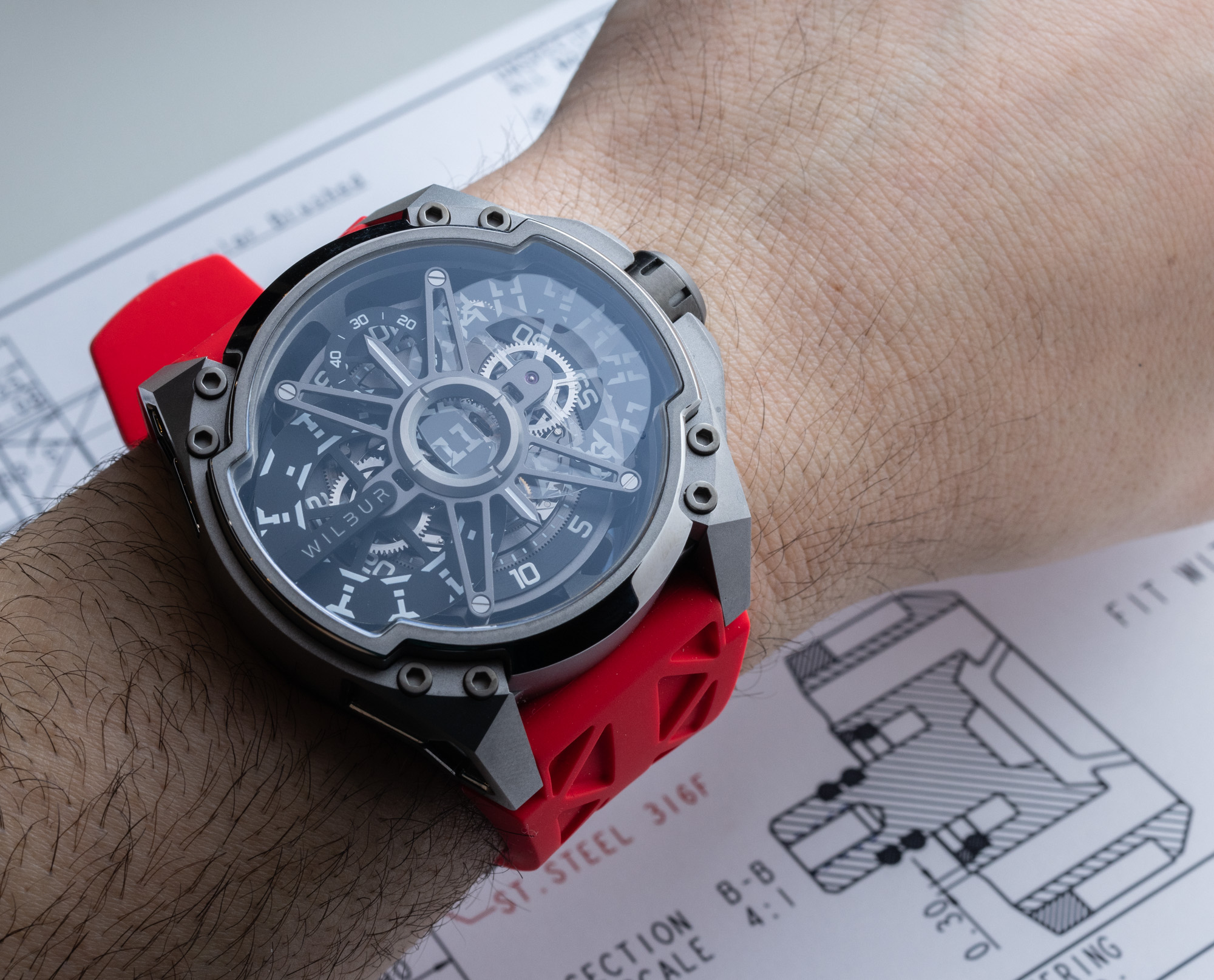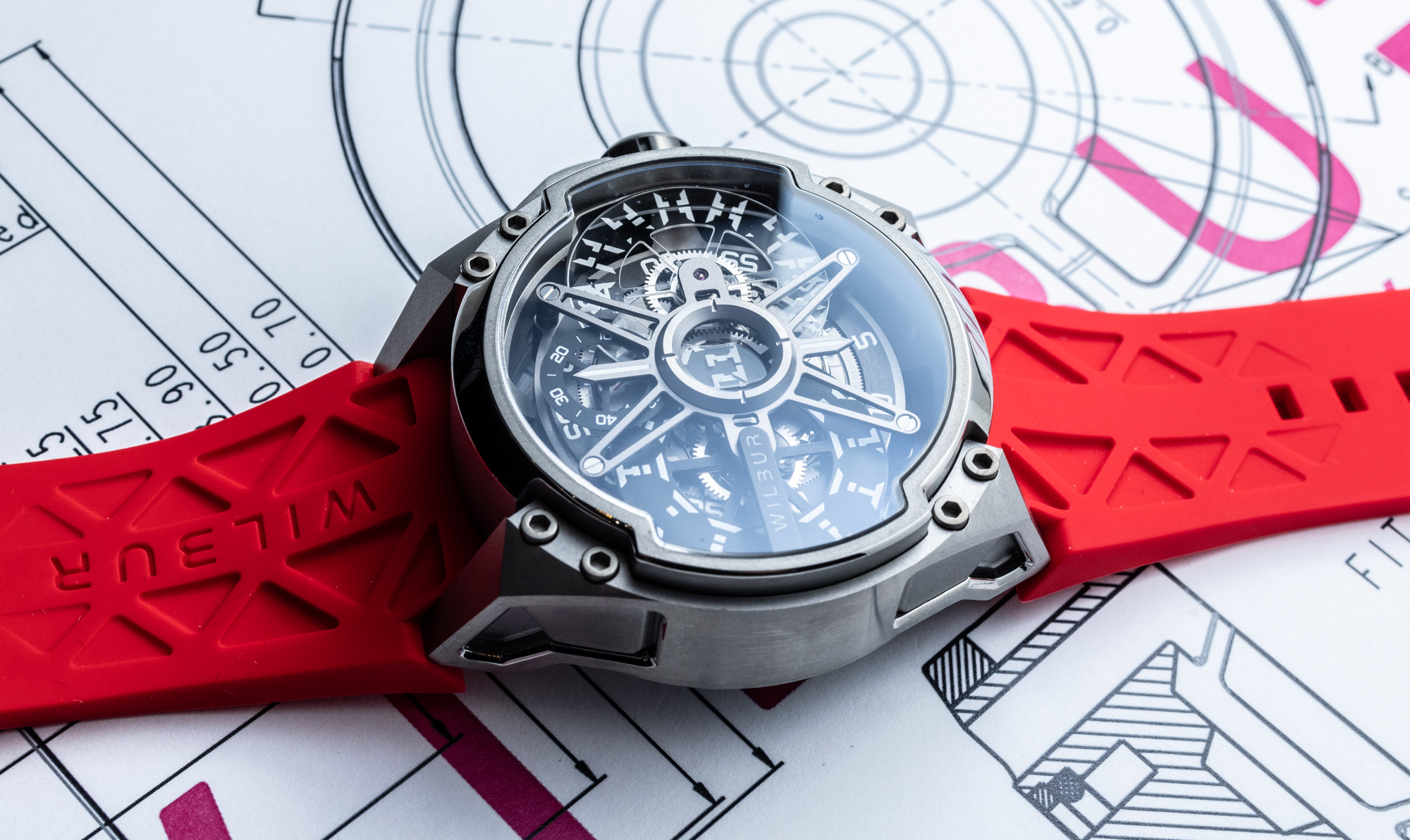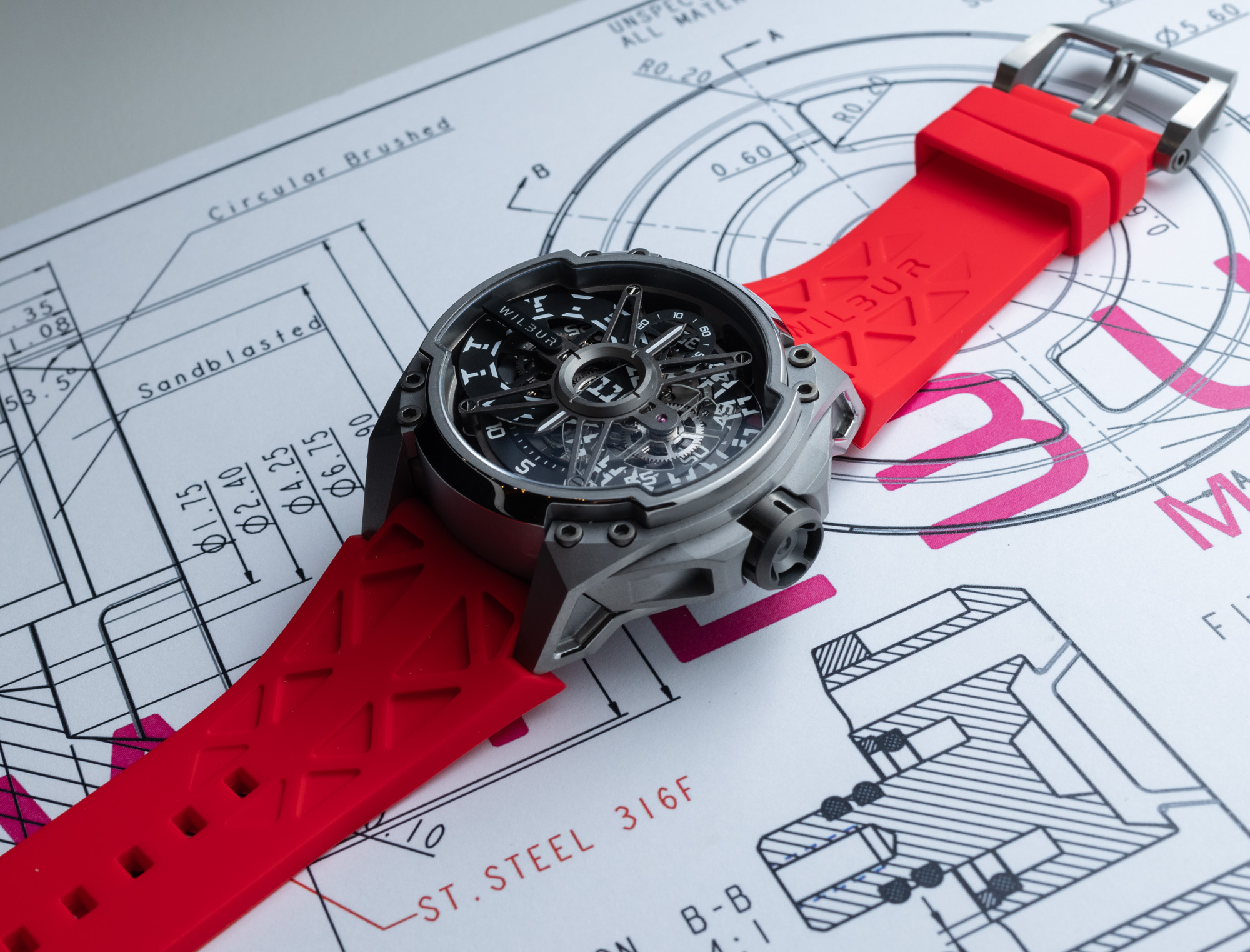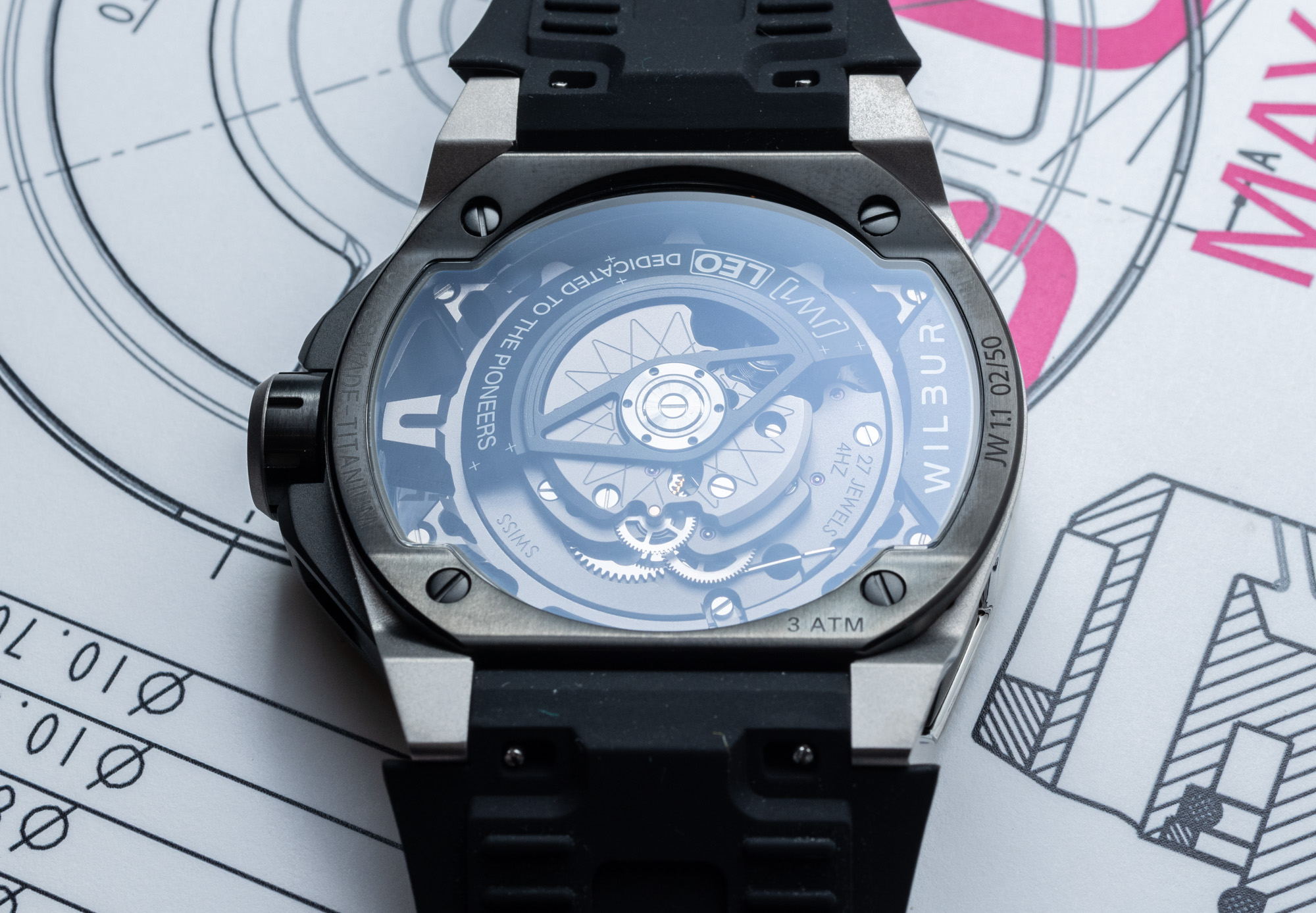
According to California-based Wilbur Watches, it took around seven years to develop the Leo family of products, a new futuristic mechanical timepiece collection that was recently debuted earlier in 2023. Wilbur founder Jason Wilbur would often give me updates about the development of the Leo as we discussed the development of his brand and its other products. The Leo was supposed to be the standout, high-complication piece that would garner the attention of movement lovers, as well as design lovers. A car designer by trade, Wilbur brings his own particular artistic and industrial design ethos to wristwatches — a story that really began with his development of the Tread 1 for watch brand Devon. The Leo is the most ambitious watch to date he has designed with his own name on it. So let’s take a first hands-on look at the Wilbur Leo which begins with the Leo JW1 pieces that are currently represented by three models; the Wilbur Leo JW1.1, Leo JW1.2, and the Leo JW1.3.
The movement inside the Wilbur Leo is the most important part. It was designed in collaboration with Concepto (a mechanical watch movement designer and manufacturer) and uses a strong base mechanism with a special module developed exclusively for Wilbur. It is called the “Wilbur Engine One” and features the time with jumping digital hours and moving discs for the minutes and seconds indicators. The basic operation of the movement includes a 4Hz frequency regulation system, but oddly, Wilbur does not mention the power reserve of the mechanism. That might be because the power-hungry module uses a lot of power, which makes the fact that the movement is self-winding rather important. With a sandblasted finish and modern look, the Wilbur Engine One can be viewed through the sapphire crystal caseback. According to Wilbur, the Leo case is designed with shock absorption in mind, in theory protecting the movement from shocks and vibrations that could impact operation and accuracy. This uses Jason’s suspended movement concept that sees the case as both a protective housing for the movement and also something that is separate from it. You can see through the watch case when looking at the periphery of the dial around the Wilbur Engine One movement.

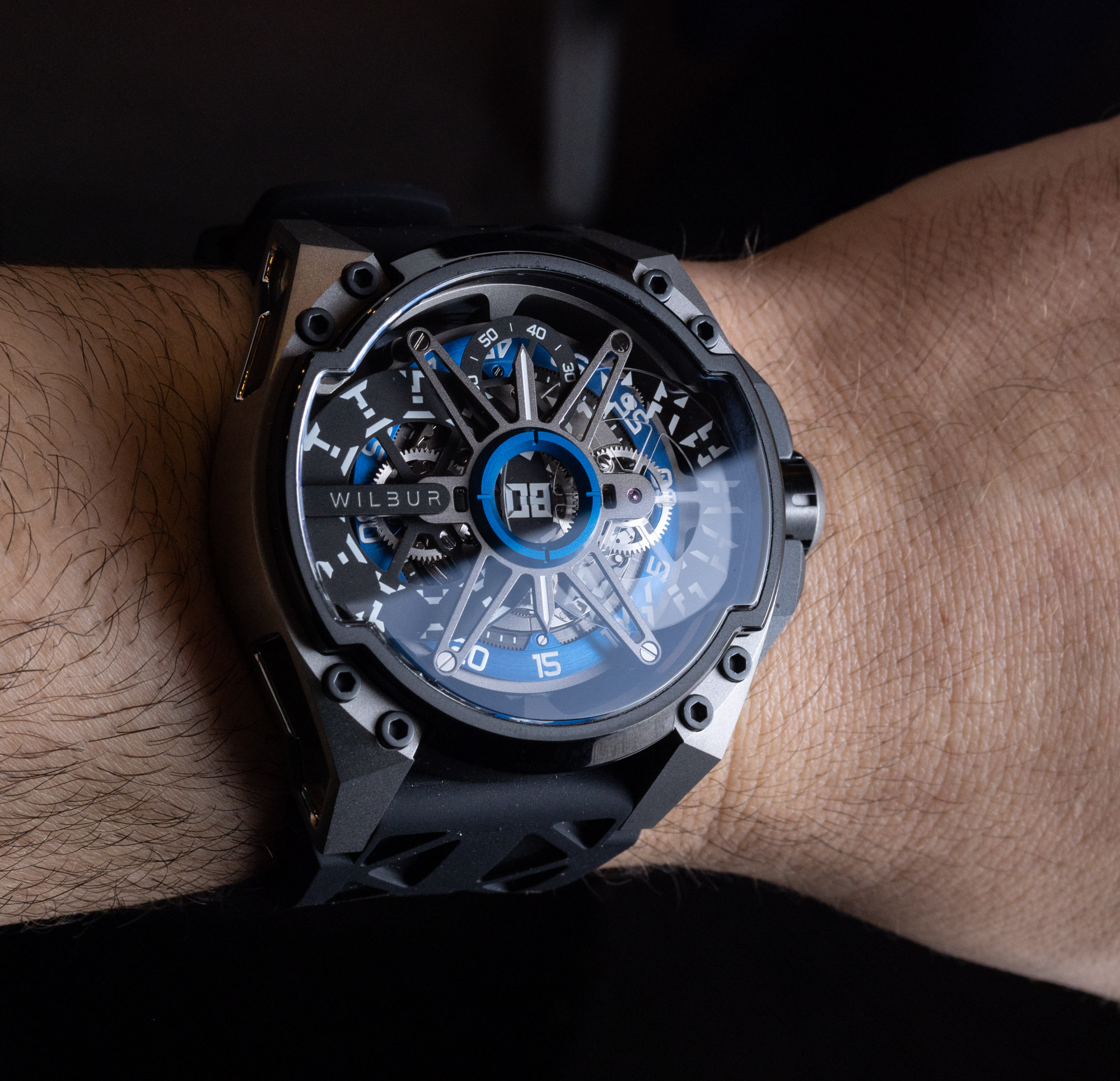 When it comes to the movement display, all focus is on the center of the watch face and its jumping hour display. In order to maximize the visual size of the display, Wilbur opts for a two-disc system similar to how a big date indicator works — only in this instance, the discs overlap. This overlapping allows shapes to overlay on one another creating the digital number display. One disc is black and produced from aluminum, and the other disc is transparent sapphire crystal. The fun design means that until the discs overlap the shapes printed on them look abstract, similar to the alphabet in the Predator series of science fiction movies. Once they perfectly overlap, they form a clear digital numeral in the middle of the dial.
When it comes to the movement display, all focus is on the center of the watch face and its jumping hour display. In order to maximize the visual size of the display, Wilbur opts for a two-disc system similar to how a big date indicator works — only in this instance, the discs overlap. This overlapping allows shapes to overlay on one another creating the digital number display. One disc is black and produced from aluminum, and the other disc is transparent sapphire crystal. The fun design means that until the discs overlap the shapes printed on them look abstract, similar to the alphabet in the Predator series of science fiction movies. Once they perfectly overlap, they form a clear digital numeral in the middle of the dial.
The system is designed in a manner that allows the user to adjust the time both forward and backward. This is not the case with most jumping and retrograde indicator systems which are really only designed to move in one direction. While there is a huge visual emphasis on the hour indicator, the minutes and seconds are displayed in a less overt manner. Two small stationary hands pointing up and down on the dial are there for the seconds (top) and minutes (bottom) indicators. Here, moving discs follow a path along the hands where the current time is read. I would very much like to see a “Wilbur Zeitwerk” version of the Leo that has both a digital hours and minutes display (an analog seconds indicator would be fine). I think it would be absolutely market-shifting if Wilbur came out with a spiritual successor to the A. Lange & Sohne Zeitwerk at a price under $50,000 USD.
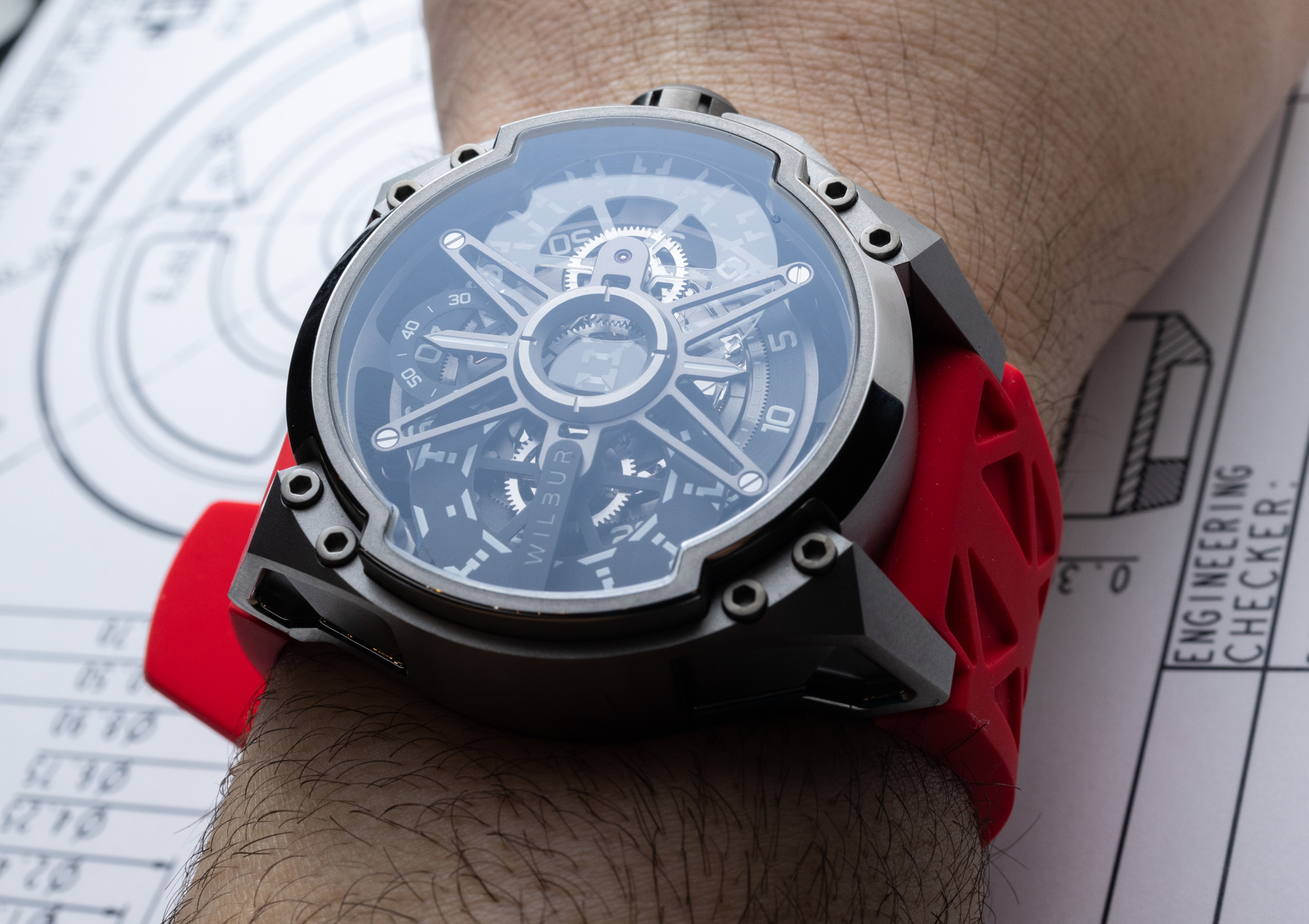
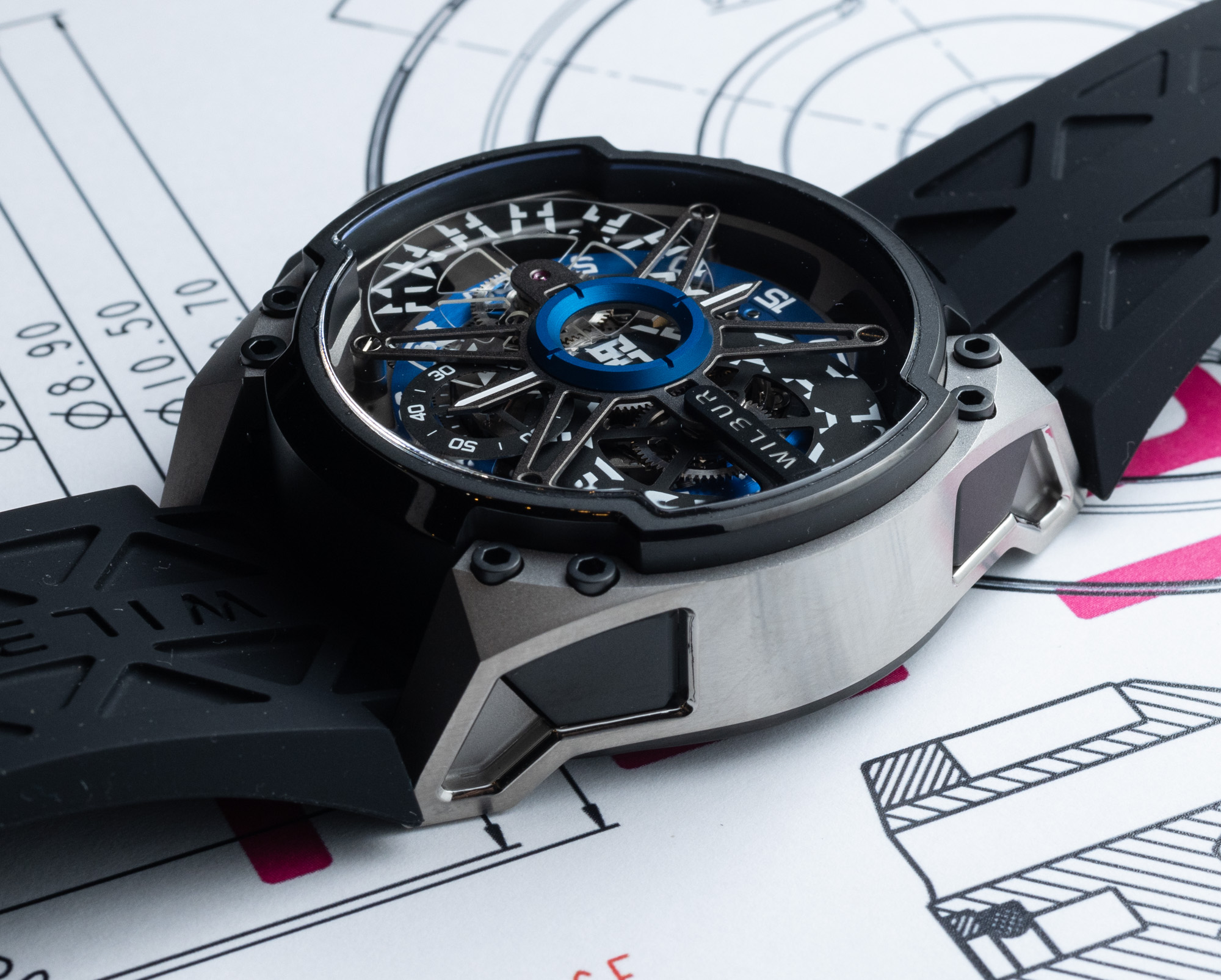
Housing the Wilbur Engine One movement is a robust and aggressive-looking case that is actually quite comfortable on the wrist. Each current version of the Wilbur Leo has a mostly titanium case with some of the titanium being naturally finished and other Leos having DLC-coated titanium for a different color. The cases are 46mm-wide, 16.5mm-thick, and have a 48.5mm lug-to-lug distance. The case is also water resistant to 30 meters and has a flat AR-coated sapphire crystal over the dial. The silicone straps are fitted with quick-release ends and designed for you to change the straps at will. As I said above, wearing the Leo is much more comfortable than the dimensions of the case suggest, in large part because of how the strap attachment and lugs are designed and how well the case wraps around your wrist. I will say that, for the price, I expected to see rubber straps. Silicone in such special shapes is easier to get into production, so I understand why Wilbur went with this material for now, but I think that the next step for the Leo family would be to upgrade the straps so that new and existing Leo watch owners can up the appeal of this otherwise excellent timepiece.
Wilbur will have its hands full getting the watch world to try on and appreciate what he did with the Wilbur Leo collection. Being a natural rebel, as well as being far from the traditional watch world in Southern CA, means that Wilbur has to independently convince watch lovers that his brand is both interesting and has merit. That means the brand needs to “touch” people one at a time, showing them the products, helping them to understand the brand, and allowing them a chance to be romanced by these very original timepieces in person, and on the wrist. This has prompted Wilbur to adopt a slightly different marketing and sales strategy. At first, the brand was attempting to take the modern approach of selling its watches direct to consumers, mainly via its website. Jason Wilbur and his team have now adopted a more pragmatic approach that leverages the power of third-party retailers. This allows Wilbur to share profits but also the effort of romancing consumers to its products, something that is necessary because, in the eyes of many consumers, Wilbur watches do not conform to many traditional wristwatch shapes, visuals, and styles. I believe that choosing to work more with third-party sales distribution partners (watch retailers) is a smart move by Wilbur (even though you can still buy watches on the brand’s website) that will speed up the process of getting people to appreciate what Jason has been hard at work doing for so many years.

 Prices for the various Wilbur Leo JW1 watches vary depending on the finishing and materials. So do the production numbers which are currently 50 pieces for the blue-accented all-natural titanium Wilbur Leo JW1.1 (priced at $32,500 USD), 25 pieces for the black-accented Leo JW1.2 (priced at $36,500), and 25 pieces for the yellow-accented Leo JW1.3 (priced at $36,500 USD). Learn more at the Wilbur website.
Prices for the various Wilbur Leo JW1 watches vary depending on the finishing and materials. So do the production numbers which are currently 50 pieces for the blue-accented all-natural titanium Wilbur Leo JW1.1 (priced at $32,500 USD), 25 pieces for the black-accented Leo JW1.2 (priced at $36,500), and 25 pieces for the yellow-accented Leo JW1.3 (priced at $36,500 USD). Learn more at the Wilbur website.



